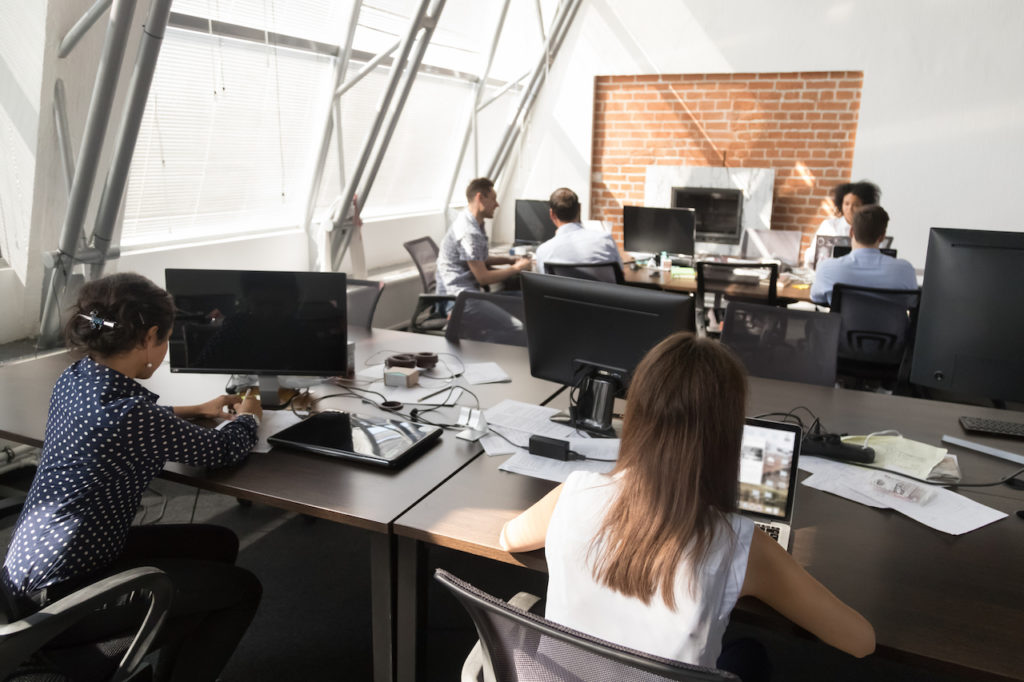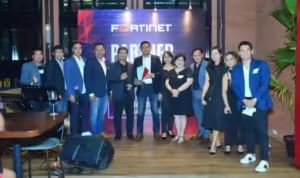THE ‘NEXT NORMAL’ | Hybrid working essentials
The erstwhile future of work has consequently been revised and redefined as Hybrid Working in connection with the emergence of the ‘next normal’.

Diverse millennial employees male female sitting at desk using laptops working in coworking open space modern light room with panoramic windows. Multiracial students studying preparing for test indoor (Diverse millennial employees male female sitting
How we worked yesterday would be far different on how we will work tomorrow. That much is implied by the Work from Home (WfH) paradigm ushered in by lockdowns and quarantine measures to mitigate the health risks brought by global Covid-19 pandemic.
The erstwhile future of work has consequently been revised and redefined as Hybrid Working in connection with the emergence of the ‘next normal’.
What then constitutes Hybrid Working? What are its guiding concepts and principles? What are the roles of employers and employees in its implementation?
Tech Sabado offers a peek into Hybrid Working and its impact on the upcoming new future of work and the workplace.
1.0 Handy definition
Hybrid Working refers to flexible work arrangement where management and rank and file work remotely, usually at home, on certain days and report to the office on other days of the week based on a given schedule. It is typically structured around a team of co-workers and it has implications on the efficiency of workers to deliver the right outputs.
2.0 New norms at work in the ‘next normal’
With the prevalence of WfH in the past months, it has been observed that old work habits and practices has shifted to virtual activities after Covid-19 went global and sent everybody home. Effectively, there was mass migration to digital platforms to get work done like never before. Videoconferences and Zoom meetings replaced face-to-face interaction and going digital on a massive scale would definitely have an impact on the productivity of workers.
Preliminary research studies show that the mass move to the digital frontier has so far increased rather than decreased worker productivity. This has prompted HR experts to look into new standards in hybrid working arrangements pertaining to working conditions, workplace design, and amenities.
3.0 Prevailing work conditions in the ‘next normal’
• Smaller company footprints over more dispersed locations
• Home office spaces built into residences
• Increased flexible work across multiple locations
• Work from home; meet in the office, bringing everyone together virtually
• Seamless workflows between home and office
• Technology designed for ease of use with personal devices
• Recruitment over larger demographic areas
• Only necessary business travel
4.0 Developing hybrid working practices
• Review and revise work-from-home policies and focus on how employees could be productive in performing roles.
• Create engaging and productive virtual workspaces, using noise-cancelling and intelligent acoustic solutions in dynamic headsets and video soundbars.
• Banish under-utilized office spaces that bring little return on real estate costs.
5.0 Designing productive, connected spaces
• Home offices
– Home offices would be given as much attention as the kitchen and be as ergonomically organized into highly functional places, decorated with objects that inspire.
– More offices above garages and in garden outbuildings for a psychological distance from home and a sense of going somewhere different—a new zone.
– Prioritize lighting that offers pools of warmth, with good task lighting for concentrated work and a warm glow for the space as a whole.
– Ensure you are in an acoustically separate space to others and adopt solutions that ensure a quiet environment.
• Office Spaces
– Organizations would invest in co-working spaces in the outskirts of cities where group collaboration and social connections with colleagues and others could lead to cross-fertilization of ideas, with resulting innovation.
– Office layouts with spatial variety and objects that inspire would replace today’s sea of standard issue desks and lighting, expressing worker’s individuality.
– Office towers as we know them would likely become a thing of the past, but cityscapes would remain, with amenities extending the apartment space; coffee shops become an extension of the living room; and walking everywhere becomes the workout space.
6.0 Creating an inclusive, collaborative culture for the virtual workforce
• Build trust. When team members trust each other to get on with things and work with positive intent, there’s no need to waste energy on anxious micromanagement.
• Be inclusive. Harness and appreciate the differences in work teams whose members come different circumstances, with their own personalities and perspectives.
• Be purpose-driven. Assess what impact the team wants on the organization against its actual impact right now.



